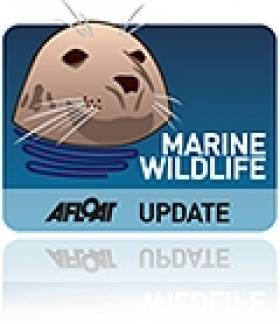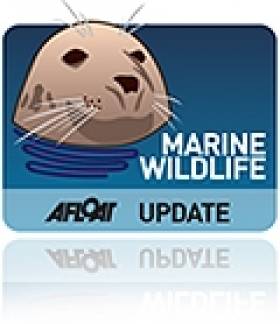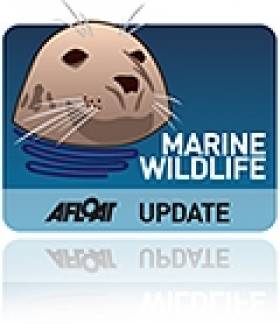Displaying items by tag: Bottlenose
Bunratty Dolphins Move On To Deeper Waters
#MarineWildlife - The trio of bottlenose dolphins who took up residence close to Bunratty Castle recently have apparently moved back out to deeper water after growing concerns for their well-being.
As previously reported on Afloat.ie, the dolphins had made their home opposite Durty Nellys pub in the Ratty River, which flows into the Shannon Estuary.
Simon Berrow of the Irish Whale and Dolphin Group (IWDG) explained that it's not unusual for dolphins to forage for food in waterways that feed into the estuary, though they usually return to the main catchment on their own shortly after.
With fears that their acoustic abilities were impaired, preventing them from navigating downstream past a series of bridges and concrete pillars between them and the main watercourse, a rescue attempt had been planned for late last week.
But as the Clare People reports, this was called off as the dolphins were spotted less and less frequently in the area.
Later hydrophone tracking by the IWDG led experts to discover that the cetaceans were able to come and go as they pleased.
Despite this, dolphins only have a limited ability to survive in fresh water, and can develop serious kidney and skin problems if exposed for a significant length of time.
Dolphin Trio At Home Near Famous Watering Hole
#MarineWildlife - Three bottlenose dolphins have made a new home close to a famous tourist watering hole in Co Clare.
According to the Irish Independent, the trio have taken up residence next to Durty Nellys pub in the Ratty River, which flows past Bunratty Castle into the Shannon Estuary.
The Irish Whale and Dolphin Group (IWDG), which has been tracking the group, believes they originated from a larger group populating the estuary.
As the IWDG's Simon Berrow explains, such dolphins are known to forage for food in rivers that feed into the estuary, and will return to the main catchment on their own.
While the risk of stranding in the shallower waters of rivers is unlikely, there is growing concern that the dolphins have been in the area for longer than expected.
"We can't rule out the possibility that their acoustic abilities may be impaired by the series of bridges and concrete pillars that span one of the bridges, and that they may be finding it difficult to navigate as a result of an 'acoustic trap'," says Berrow.
The IWDG says it is in discussion with the National Parks and Wildlife Service as to what options are available to step in to shepherd the trio back to the Shannon Estuary if necessary.
Thirty Years of Fungie's Frolics in Dingle
#FUNGIE - A new video posted to YouTube celebrates 30 years of Fungie the dolphin in Dingle.
The male bottlenose dolphin appeared from out of nowhere in the Co Kerry fishing village in 1983 and soon made it his home, quickly becoming an integral part of the local community.
Since his arrival Fungie has made friends and warmed hearts with people both local and across the world, such as Dutch couple Jeannine Masset and Rudi Schamhart who have been meeting him for more than 20 years.
Meanwhile, locals hope that new measures for harbour users proposed earlier this year won't bring an end to boat trips to meet Dingle's most famous resident.


























































